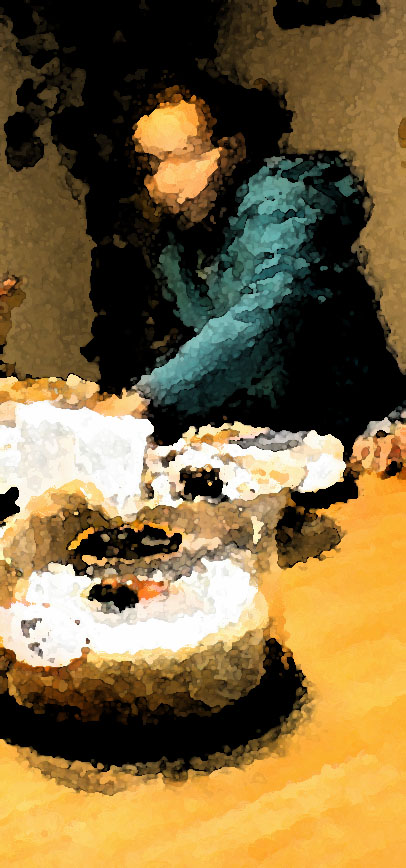|
Eating Disorders: Anorexia, Bulimia & Eating Disorder NOS
All Rights Reserve- Clinical Psychology Associates of North Central Florida CPANCF.COM 352-336-2888 Gainesville - Ocala
|

National Eating Disorders Association: Resource Links
|
-
Anorexia usually begins with individuals restricting certain foods, not unlike someone who is dieting. Food intake eventually becomes severely limited and weight drops below the 85th percentile of normal for a particular age and height. The fear of becoming fat is intense and body image is severely distorted. Individuals with bulimia tend to have a less severely distorted body image and are often of normal weight, or slightly overweight.
-
A binge may consist of up to 10,000 calories, but the number of calories can vary greatly. A binge is defined by a feeling of being out of control rather than number of calories consumed. This is often followed by feelings of shame and self-loathing. For some these feelings may be in response to a seemingly small amount of food (e.g., one cookie, a meal of pasta)
-
Psychologists can assist in the diagnosis of eating disorders. Psychologists can administer standardized tests such as the Eating Disorder Inventory, MMPI, and other measures to supplement clinical impressions and history
|
Eating Disorder Terms and Definitions
Anorexia nervosa: An eating disorder characterized by a pursuit of thinness.
that leads to self-starvation.
Bulimia nervosa: This eating disorder is characterized by 4a cycle of bingeing followed by extreme behaviors to prevent weight gain, such as purging.
Binge-eating: characterized by regular bingeing, but without engaging in compensatory purging behaviors.
|
|
Warning signs of an Eating Disorder
- Skipping meals, making excuses not to eat, avoidance of social situations in which one is expected to eat.
- Use of drugs to curb appetite (e.g. diet pills, prescription stimulants, or illegal stimulants)
- Ritualistic behaviors related to food (e.g., cutting food into tiny pieces, collecting recipes)
- Eating in secret (e.g., missing food, hidden food, empty wrappers in trash)
- Frequent trips to bathroom right after eating
- Sudden weight loss or fluctuating weight
- Compulsive exercise or exercising in secret
- Wearing large, loose clothing to hide body
- Complaints of being cold even when air temperatures are comfortable, may wear sweaters in warm weather.
|
Factors that might contribute to the development of an eating disorder
Eating disorders are complex from a medical and psychological standpoint. They often begin with a preoccupation with food and weight but are often psychologically about much more than food. Individuals with eating disorders often use food as a means of coping with overwhelming emotions and to gain a sense of control over their lives.
Many factors likely contribute to the development and maintenance of eating disorders.
Psychological factors include low self-esteem, poor body image, perfectionism, poor impulse control, inadequate coping skills, self-worth based on weight/appearance.
Interpersonal factors include difficulty expressing emotions, relationship difficulties, history of abuse, history of being teased because of weight/appearance.
Sociocultural factors: Media images that present narrow definitions of attractiveness, cultural belief that equates thinness with moral goodness, intelligence, and self-discipline.
Biological factors: Potential biochemical and genetic causes are being investigated but are not well understood at this time. Eating disorders are more prevalent in individuals with family history of alcohol or drug problems.
Eating disorders are the deadliest of all mental disorders. As many as 10-20% will die from health complications.
|
|
Effects of Eating Disorders
on physical health:
|
Treatment for Eating Disorders
For eating disorder treatment to be successful, medical needs, nutritional needs and psychological issues must be addressed. An approach where a medical doctor, a nutritionist, and a psychotherapist communicate with each other is needed in most cases.
Psychotherapy focuses on promoting a healthy relationship with food and learning positive coping skills to manage life’s stressors. Group support can help to reduce feelings of shame and secrecy. In addition, family therapy may be needed to address family dynamics that serve to maintain eating disorder behaviors, particularly with adolescent patients.
Residential or hospital-based care may be required when there are medical issues, severe physical deterioration, continuing weight loss, or resistance to treatment.
|
Related Articles:
More Than Vanity: Body Dysmorphic Disorder
Intuitive Eating: What is Learning to Eat Intuitively?
Fading Away: Weight Loss and Shifts in Identity (powerpoint)
Body Image and Eating Disorder (powerpoint) by Dr. Wiseman
Body Image and Body Dysmorphic Disorder
|

